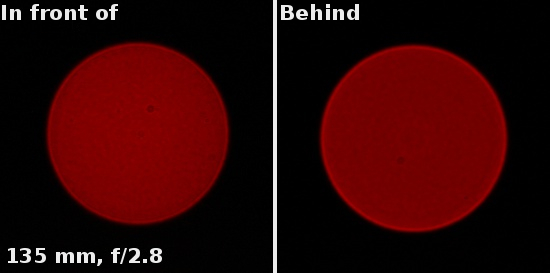Tamron SP 70-200 mm f/2.8 Di VC USD
5. Chromatic and spherical aberration
Chromatic aberration
As you can notice glancing at the crops below the Tamron 70–200 mm f/2.8 VC doesn’t have any problems with the longitudinal chromatic aberration.
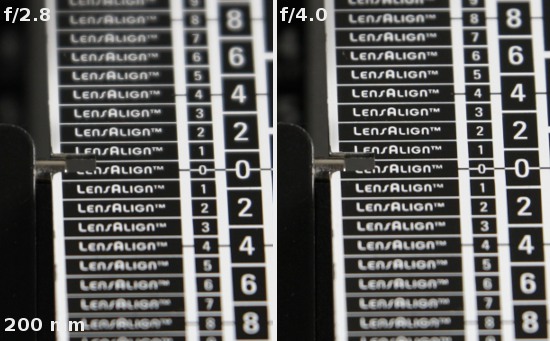 |
Please Support UsIf you enjoy our reviews and articles, and you want us to continue our work please, support our website by donating through PayPal. The funds are going to be used for paying our editorial team, renting servers, and equipping our testing studio; only that way we will be able to continue providing you interesting content for free. |
- - - - - - - - - - - - - - - - - - - - - - - - - - - - - - - - - - - - - - - - - - - - - - - -
When it comes to the lateral kind its performance on the edge of the APS-C/DX sensor and on the edge of full frame can be assessed on the basis of the graphs below and here is also hardly anything to complain about.
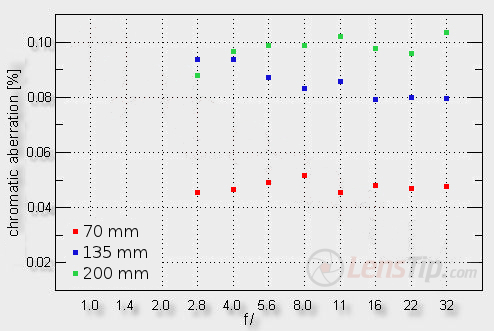
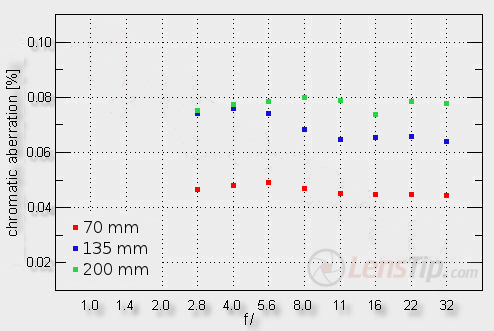
The biggest problems with the chromatic aberration you can experience at the maximum focal length but even there you can talk just about borderline values between low and medium level – nothing to make you truly worried. The lowest level of chromatic aberration can be noticed at 70 mm focal length where it is practically imperceptible.
The performance of the Tamron in this category is very similar to that of the newest stabilized 70-200 mm models produced by Canon and Nikon. What’s interesting, the Tamron fares a tad better than the Sigma which aberration could reach 0.13%.
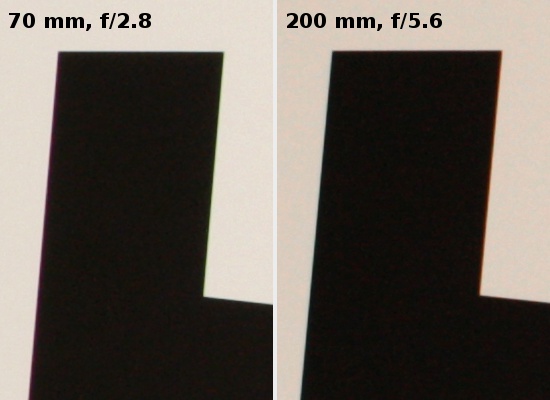 |
Spherical aberration
The Tamron SP 70–200 mm f/2.8 Di VC USD doesn’t correct the spherical aberration in a perfect way. It can be seen both in the first photo of this chapter and in defocused images of light points. With the stopping down from f/2.8 to f/4.0 the depth of field shifted slightly to the back. What’s more, the interior of the light circle which we got in front of the focus is noticeably lighter than that behind the focus. The rim of these circles is also different – that behind the focus has a distinct lighter border which can’t be noticed in the circle in front of the focus.
